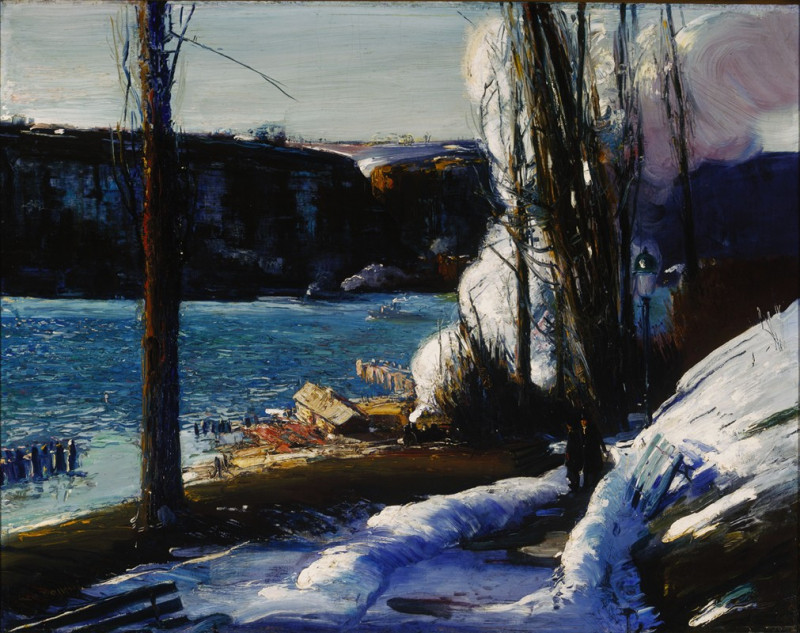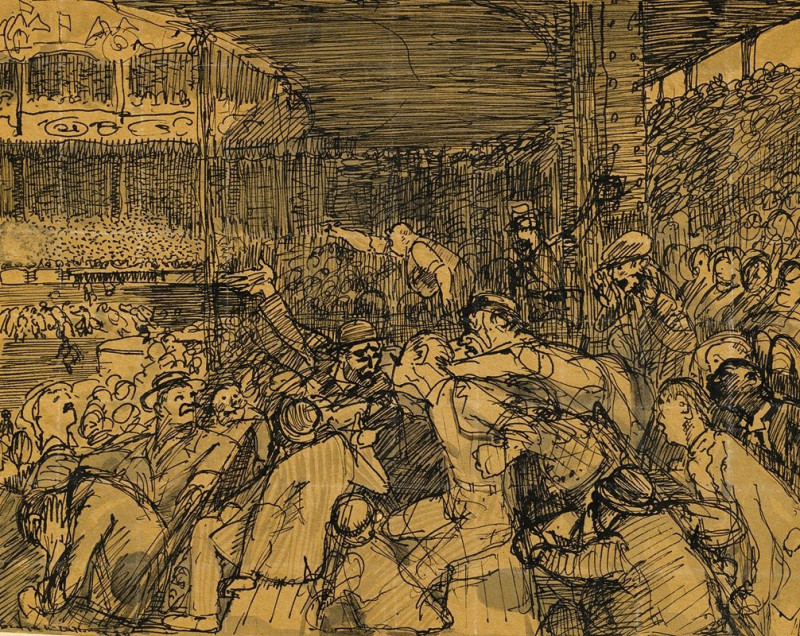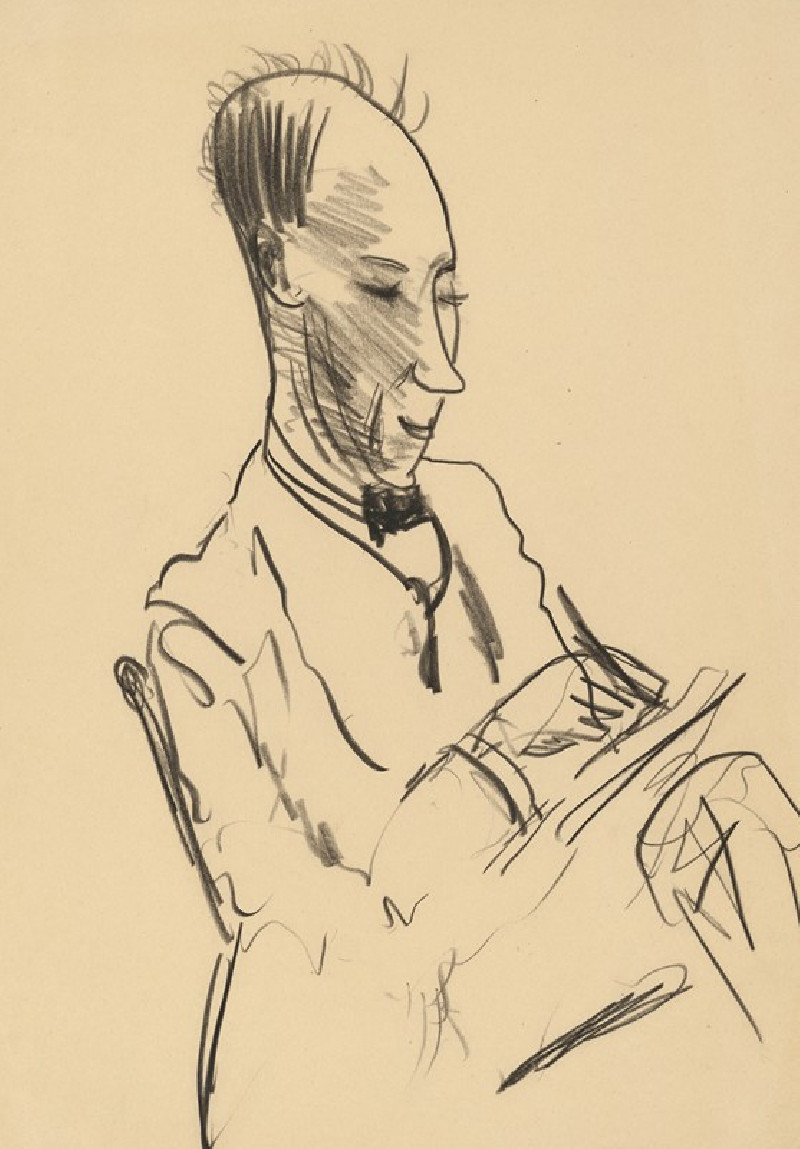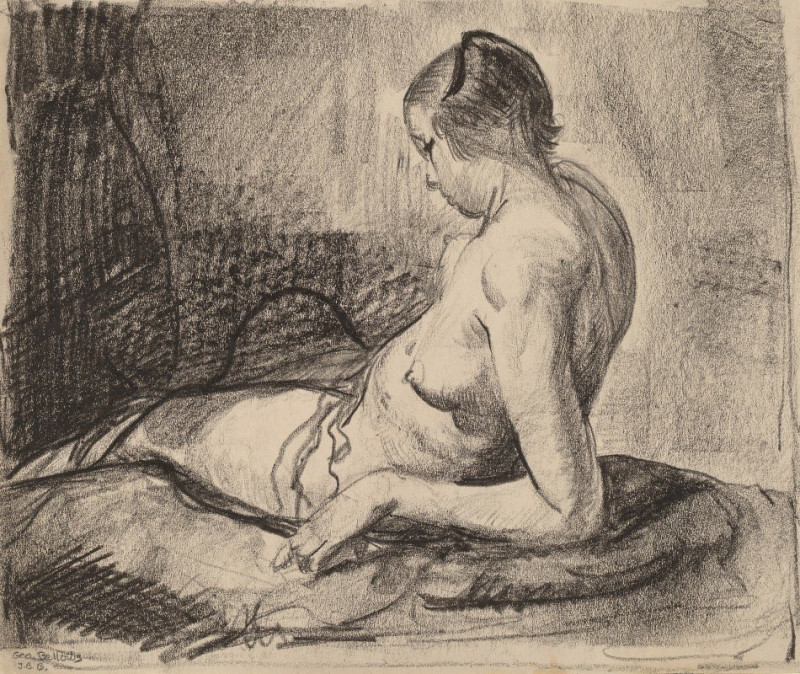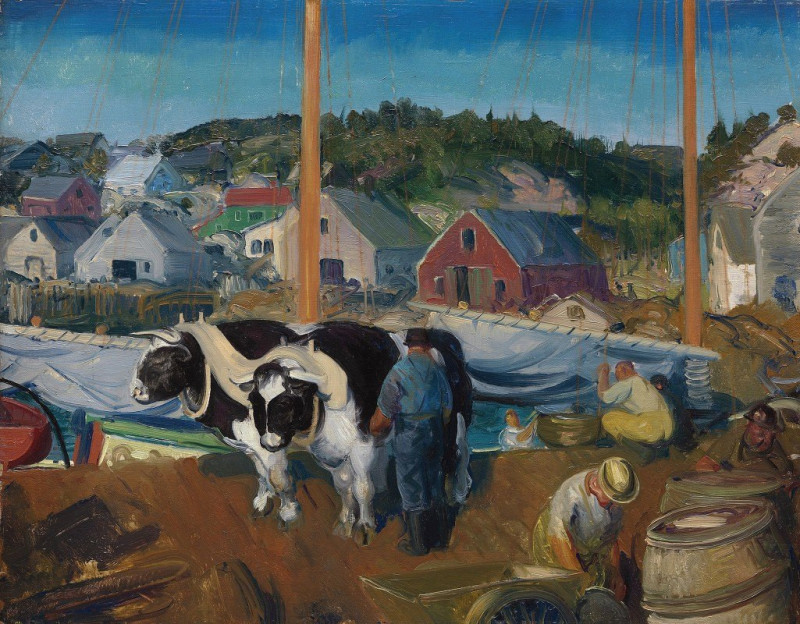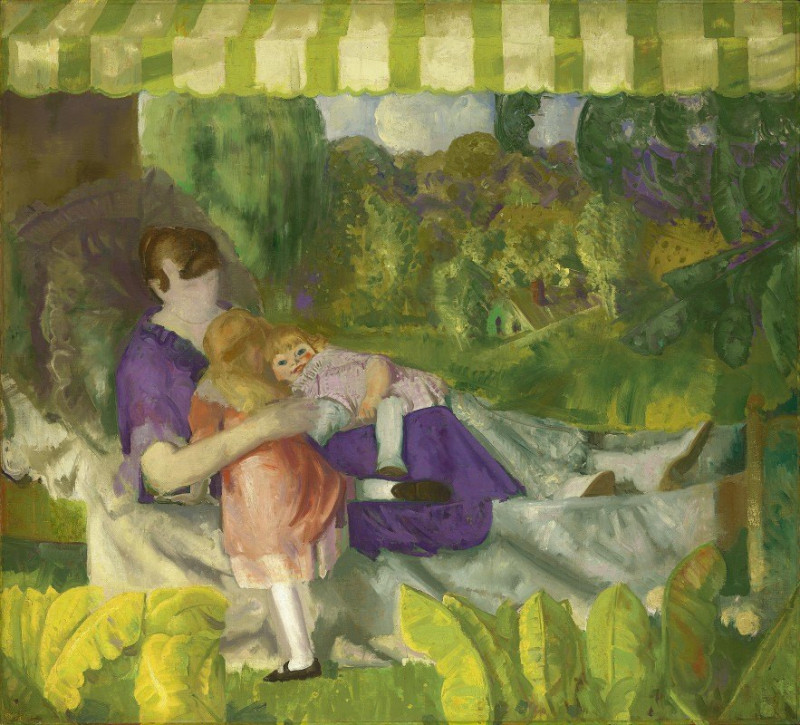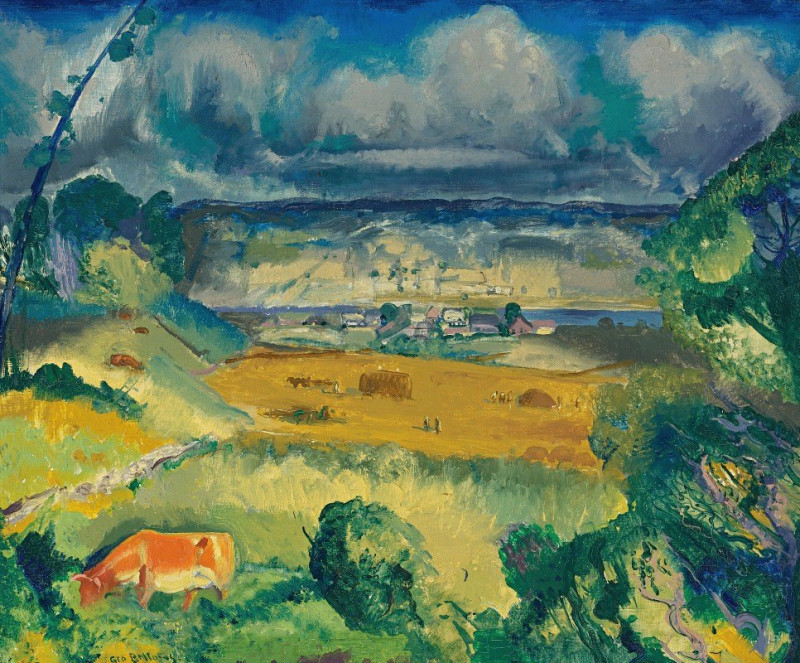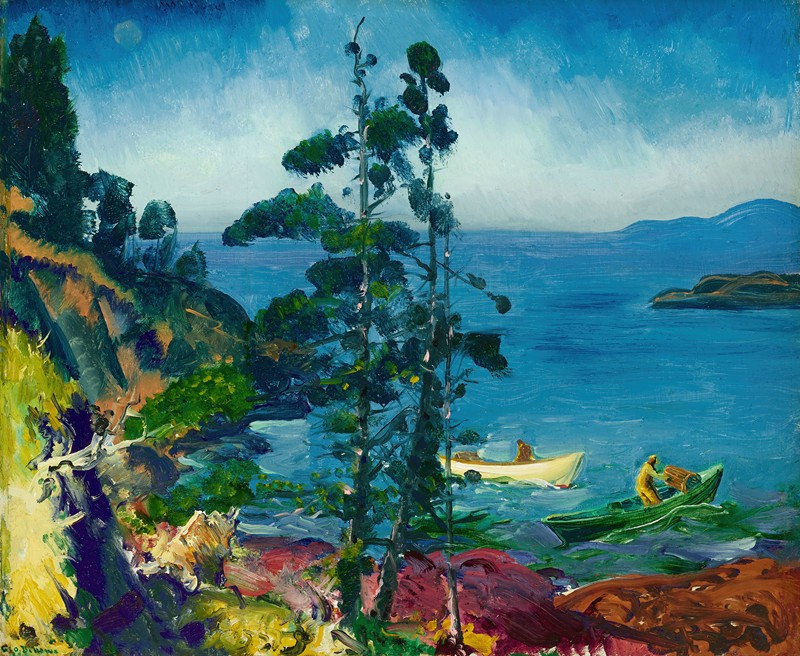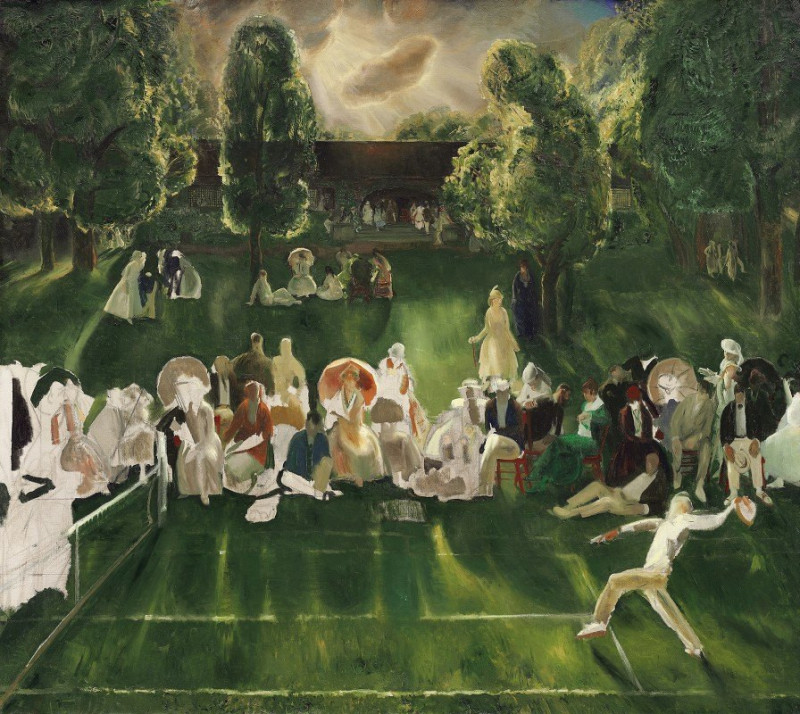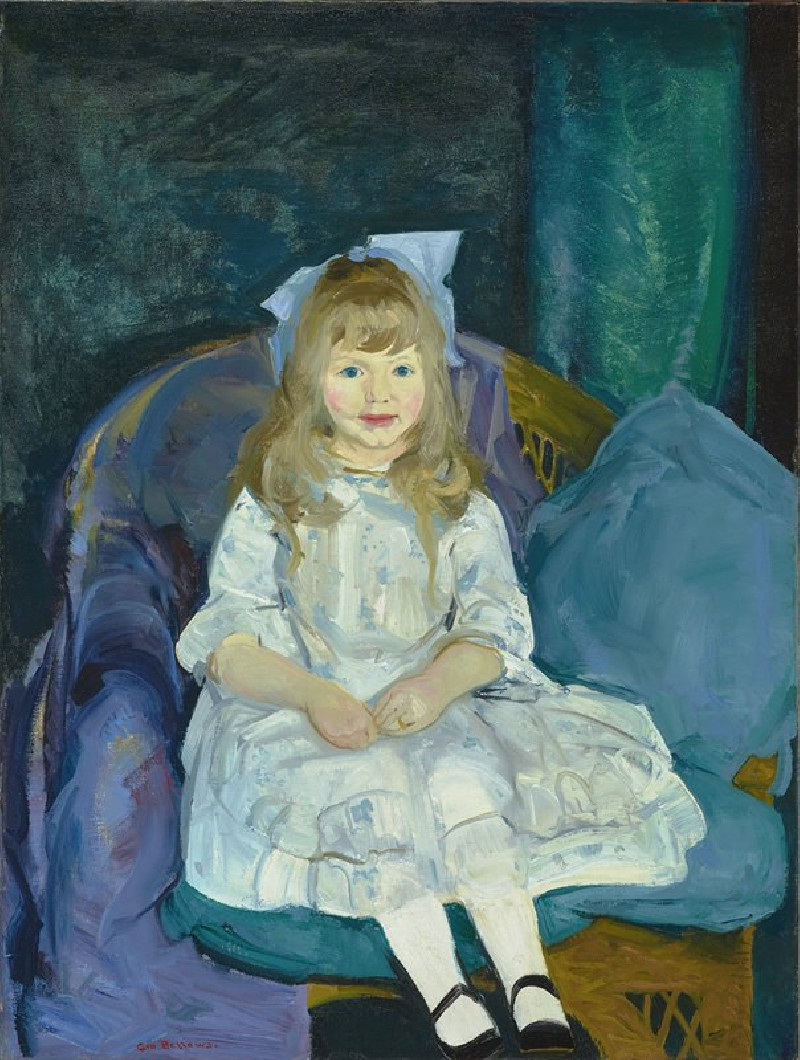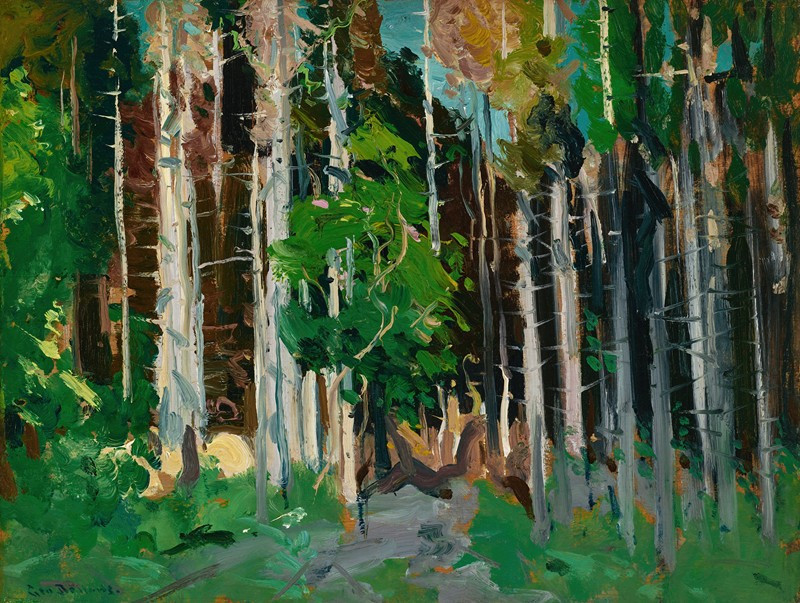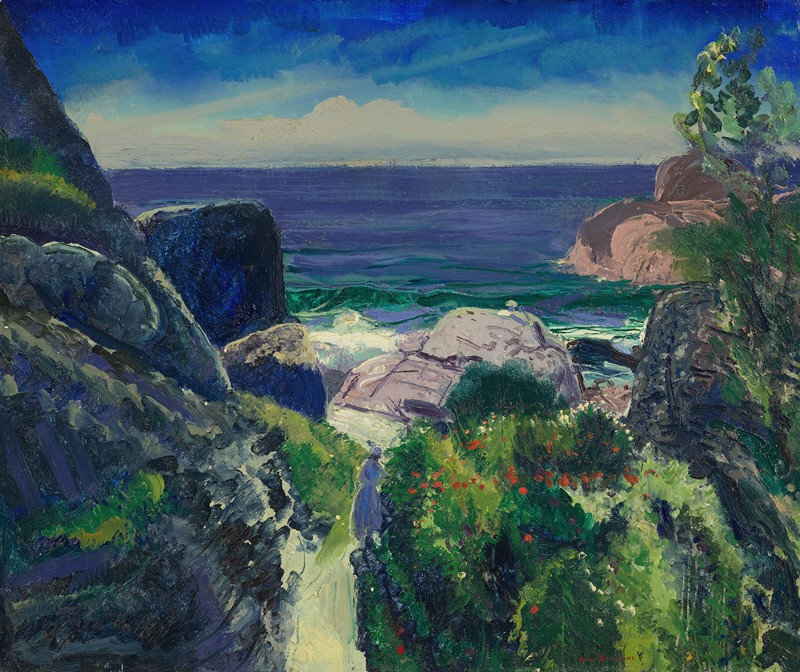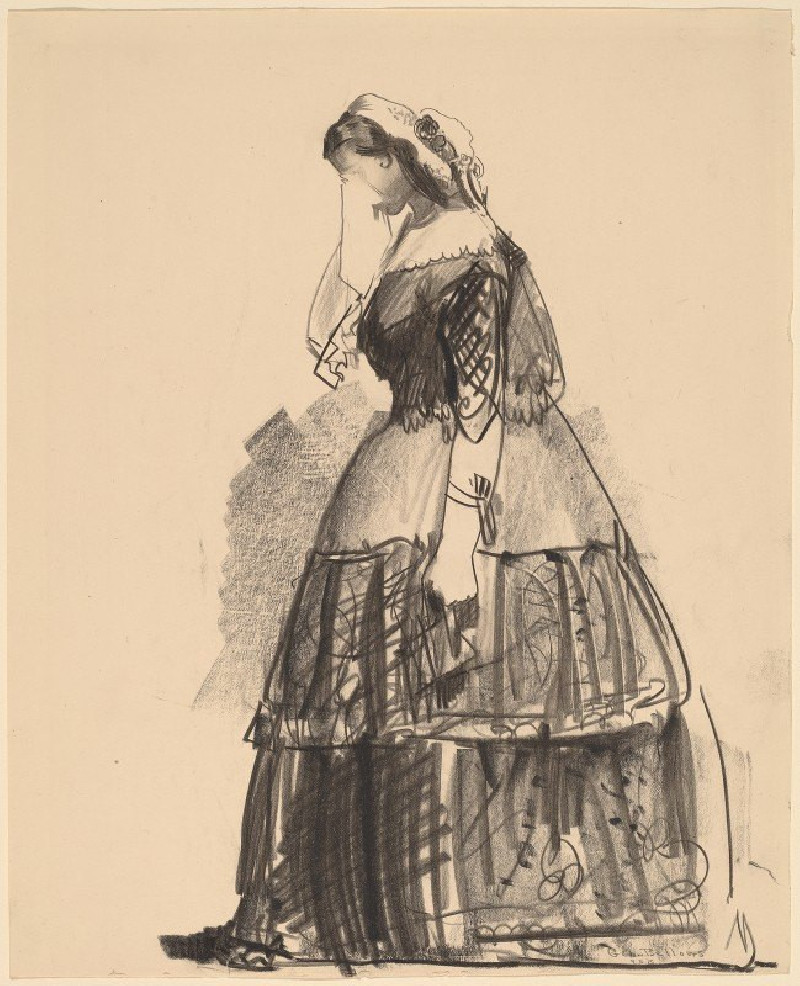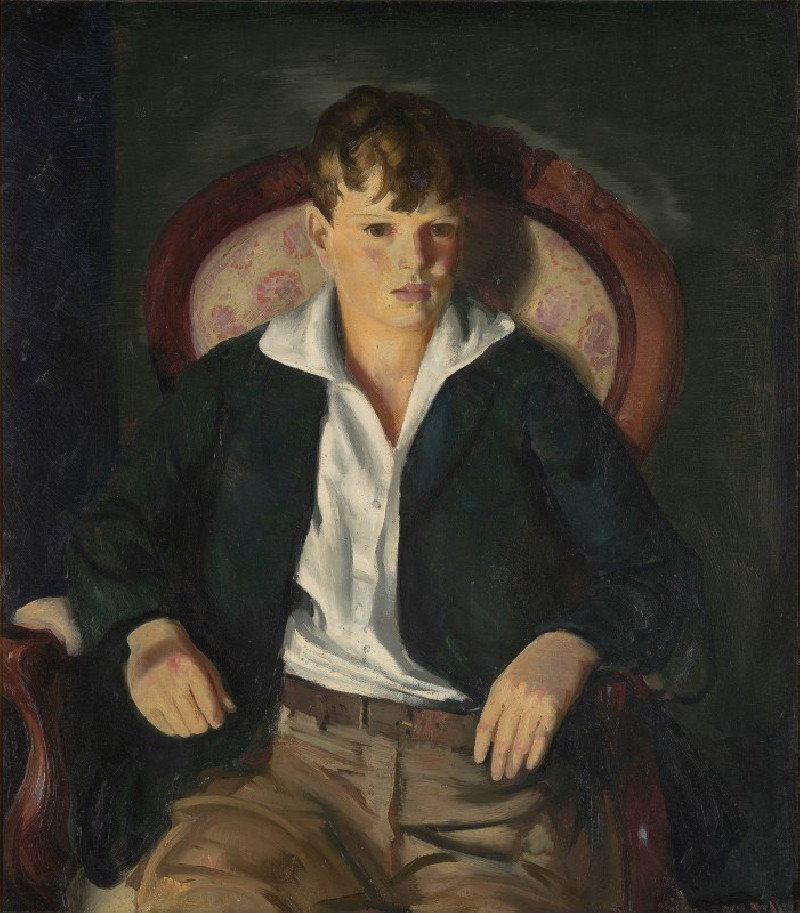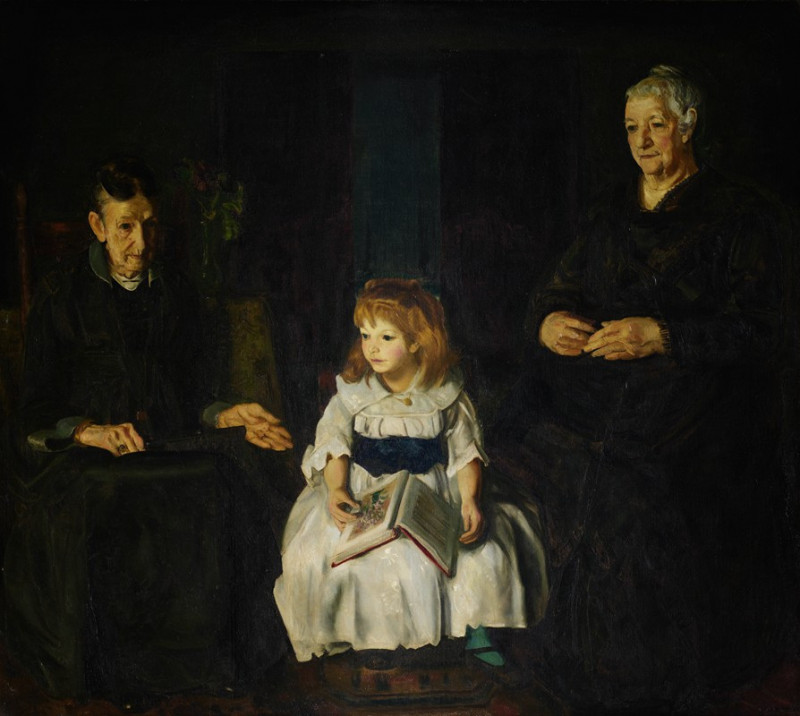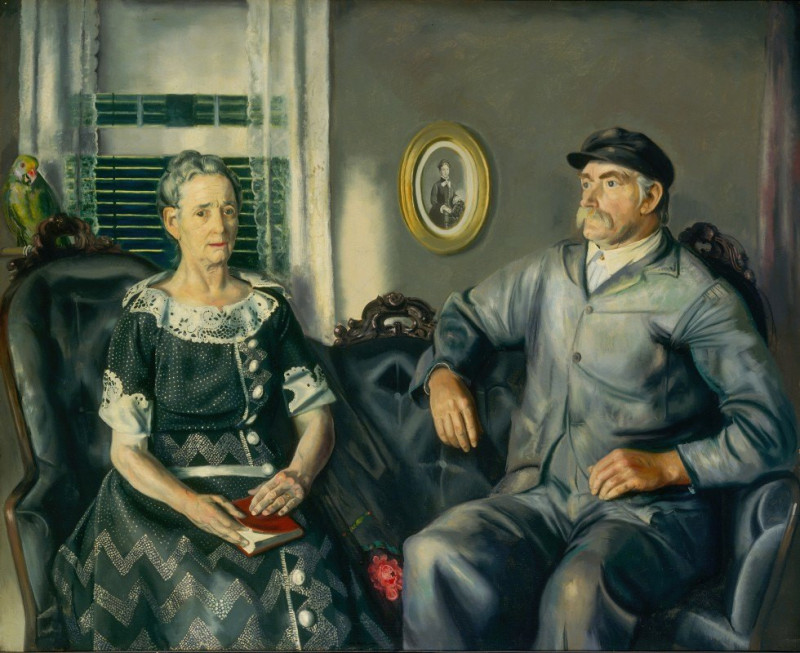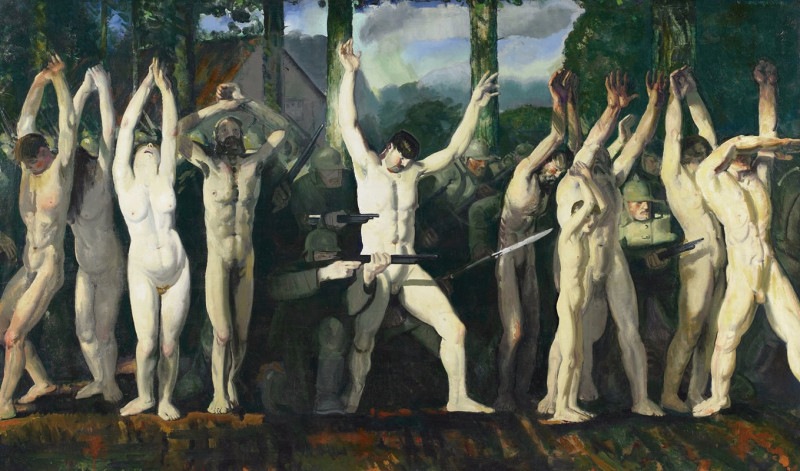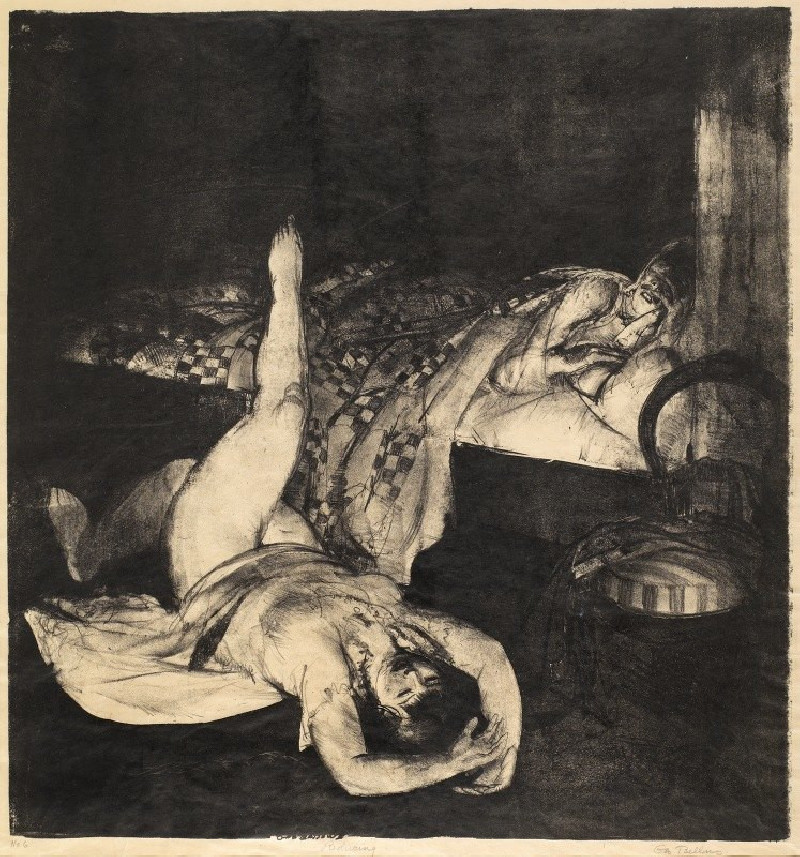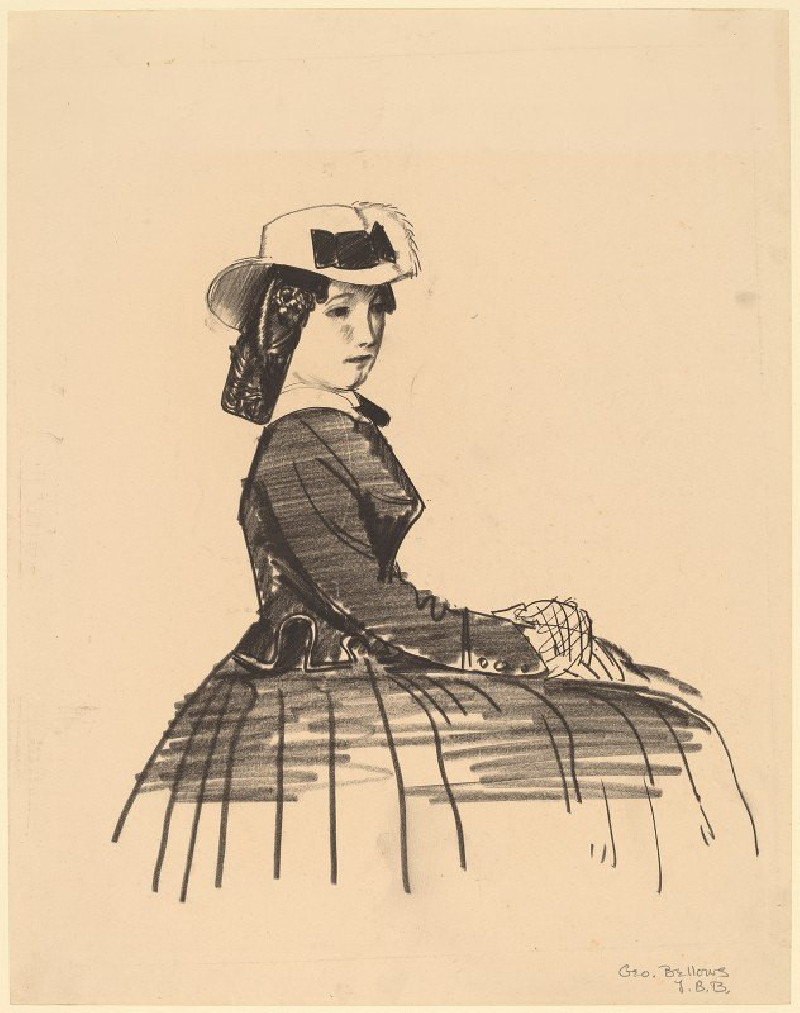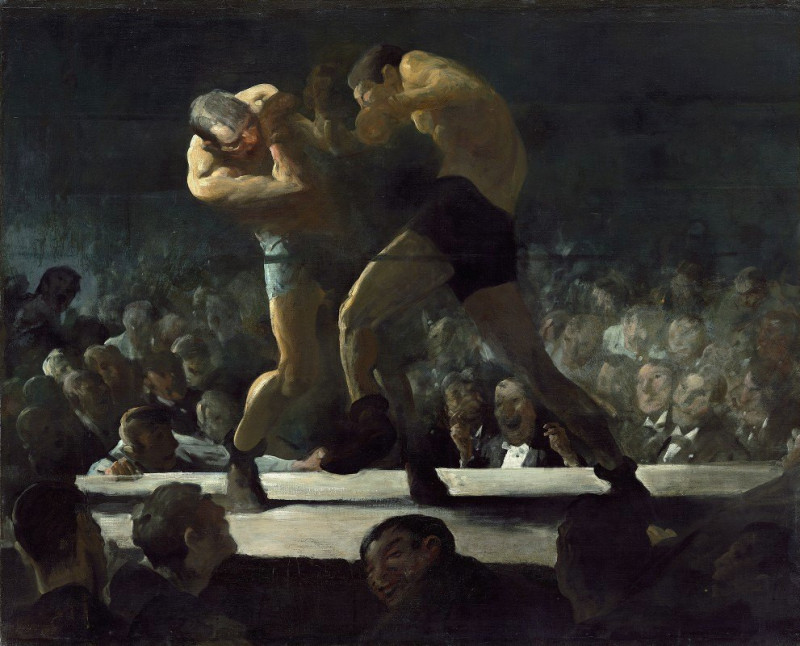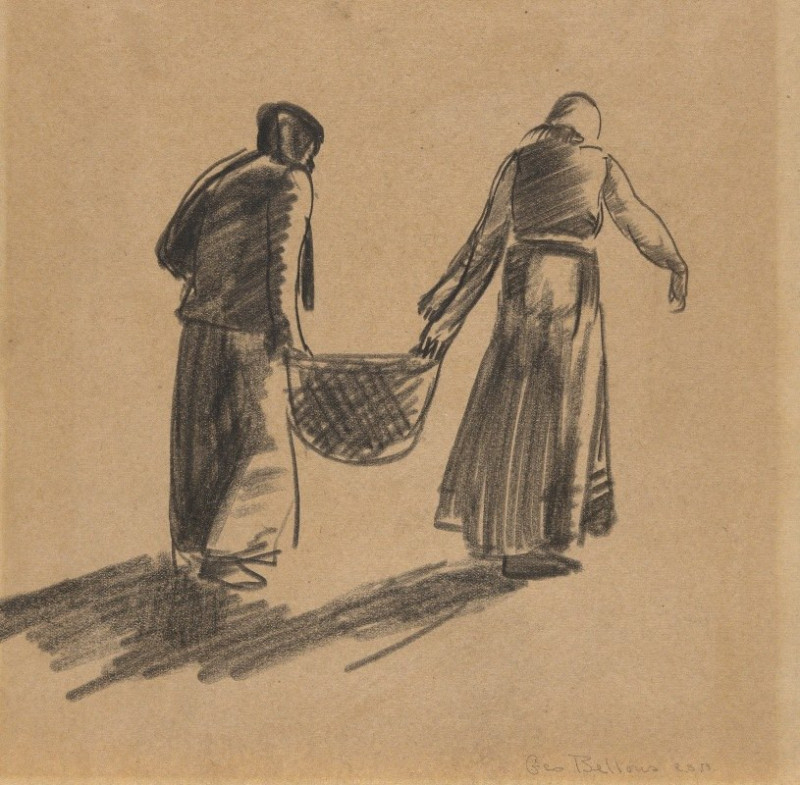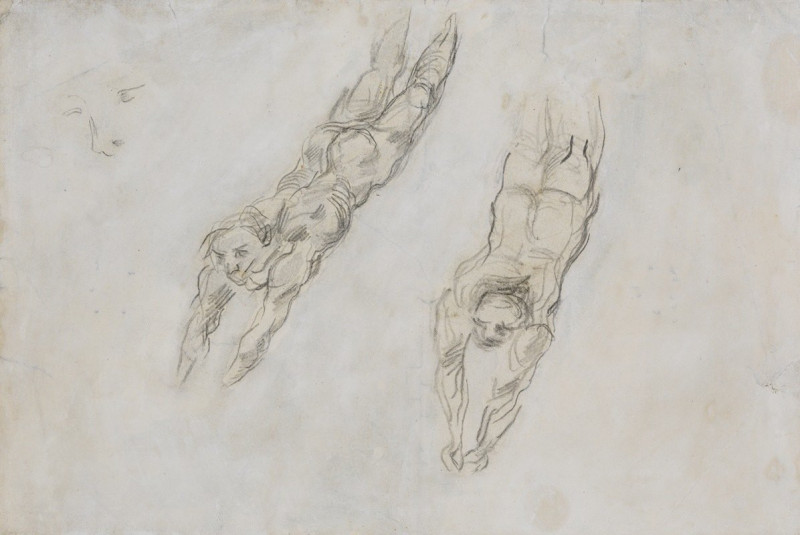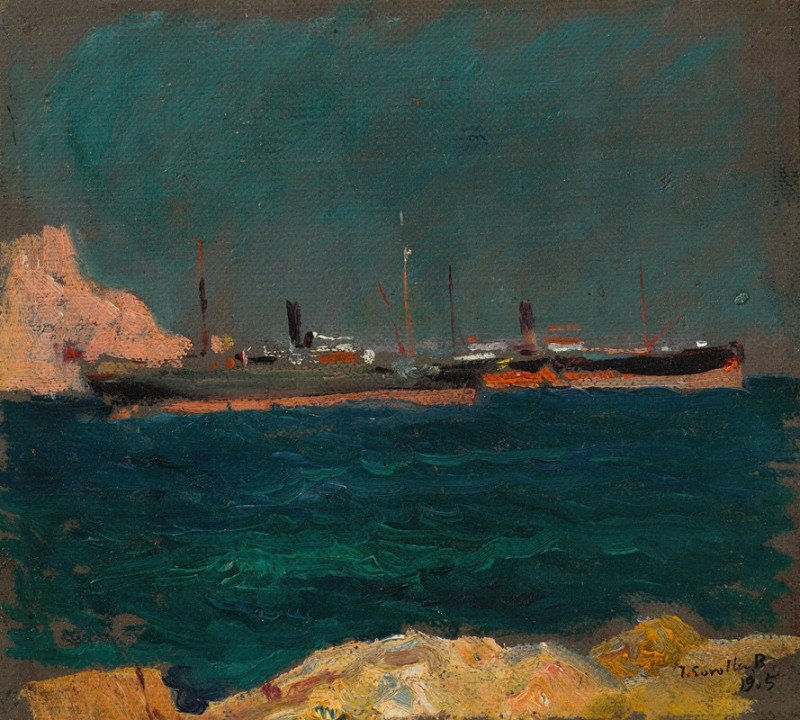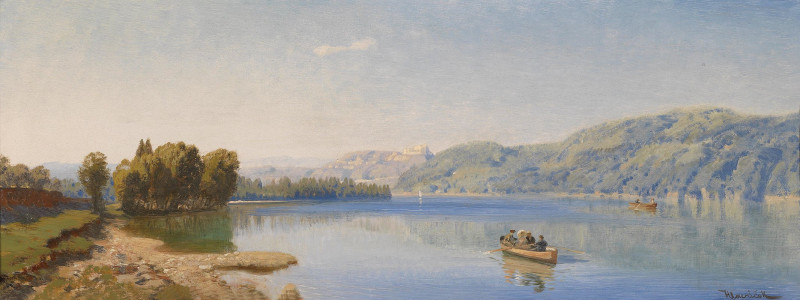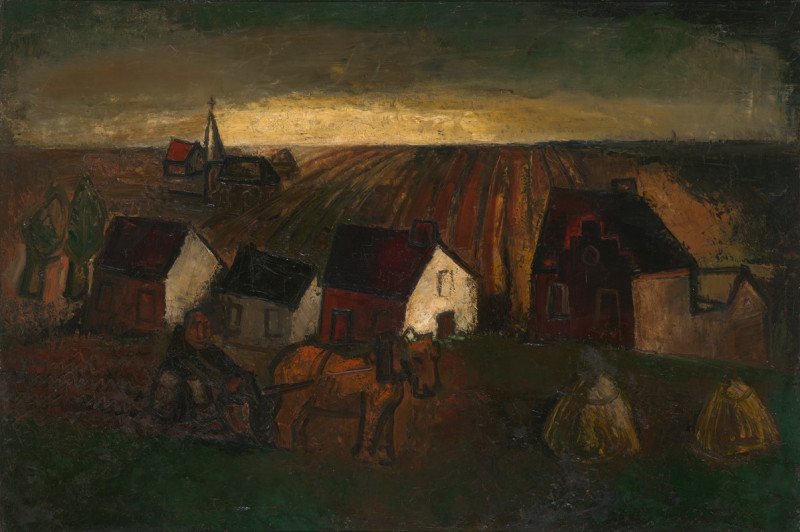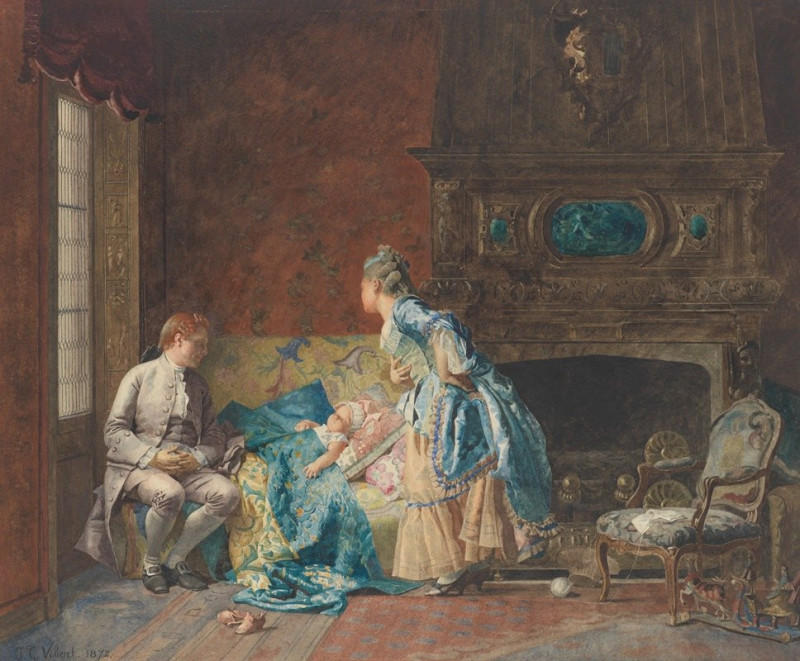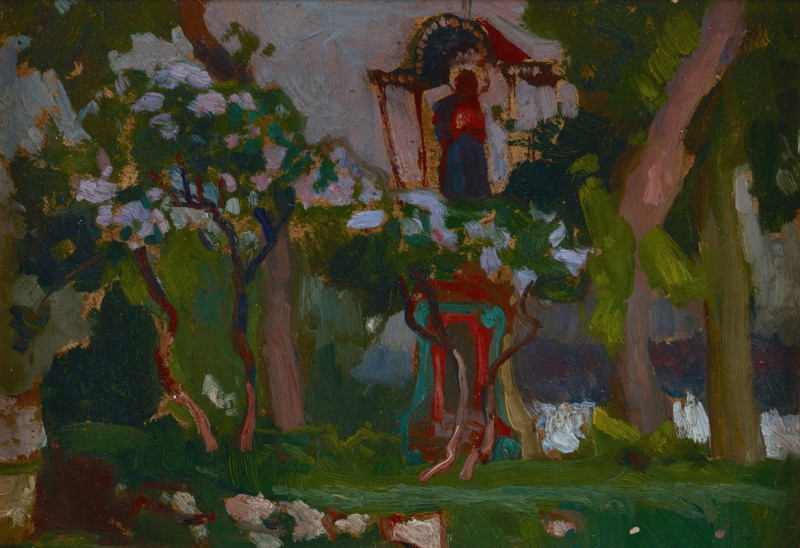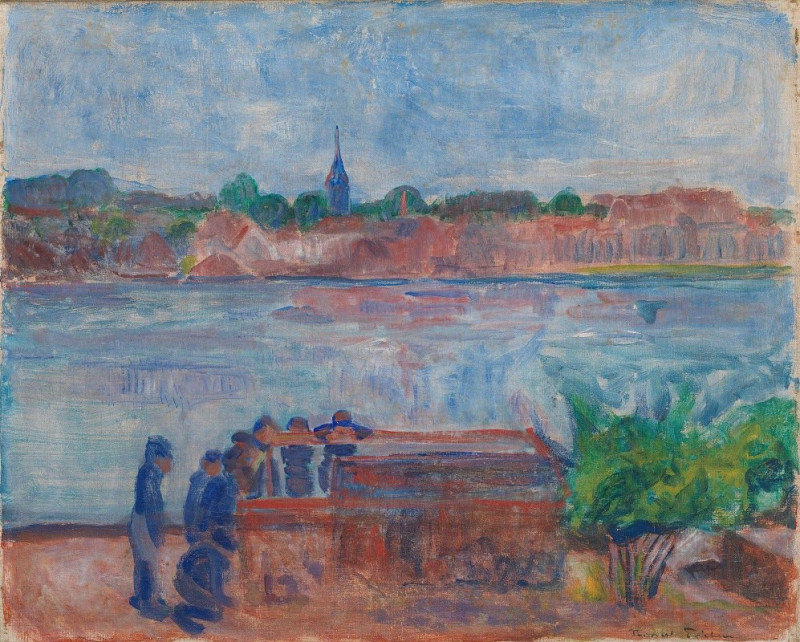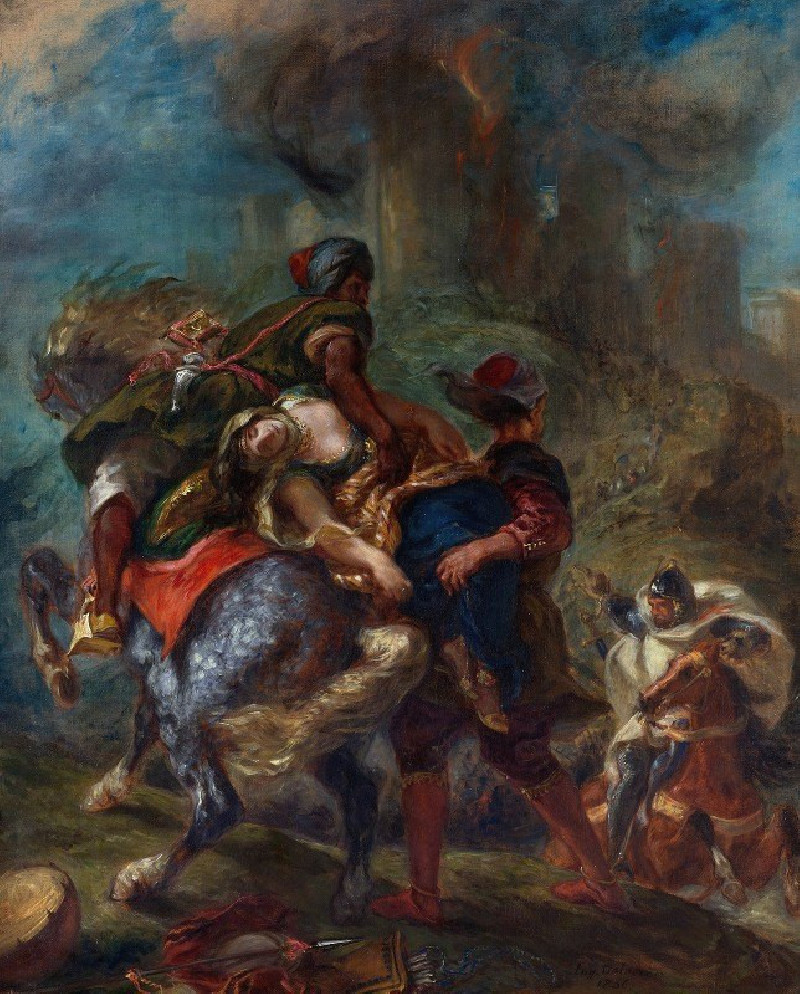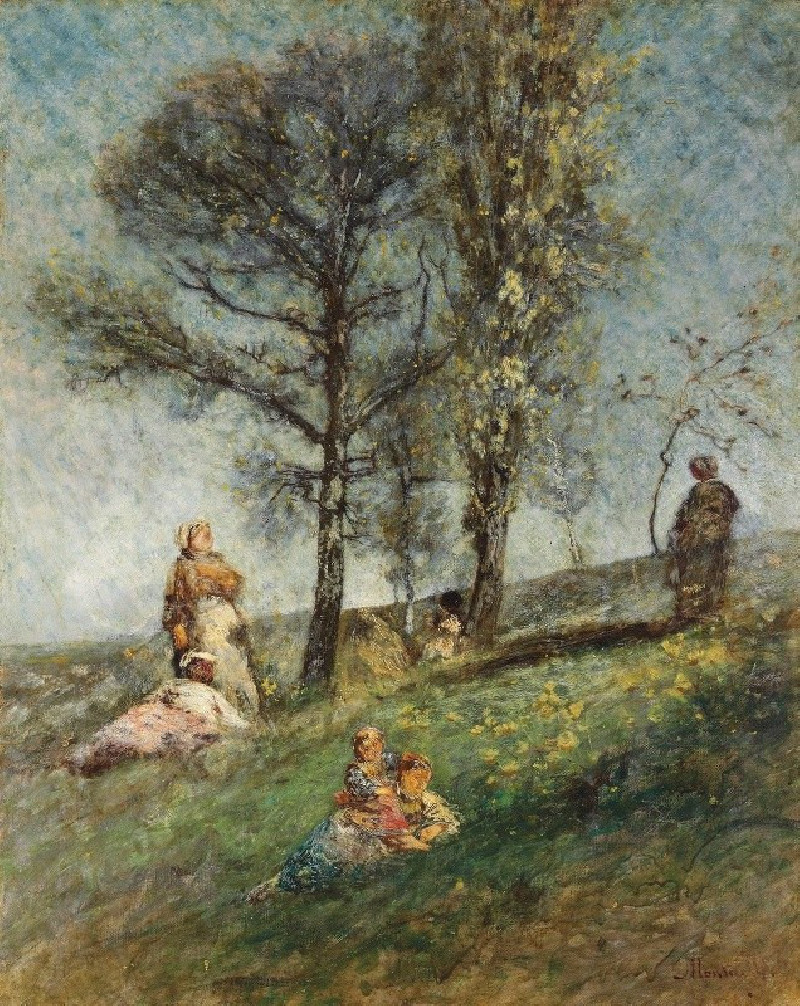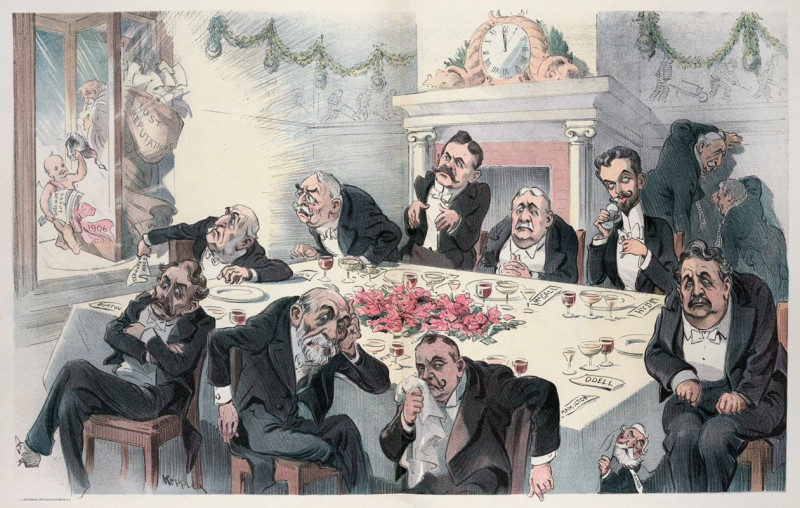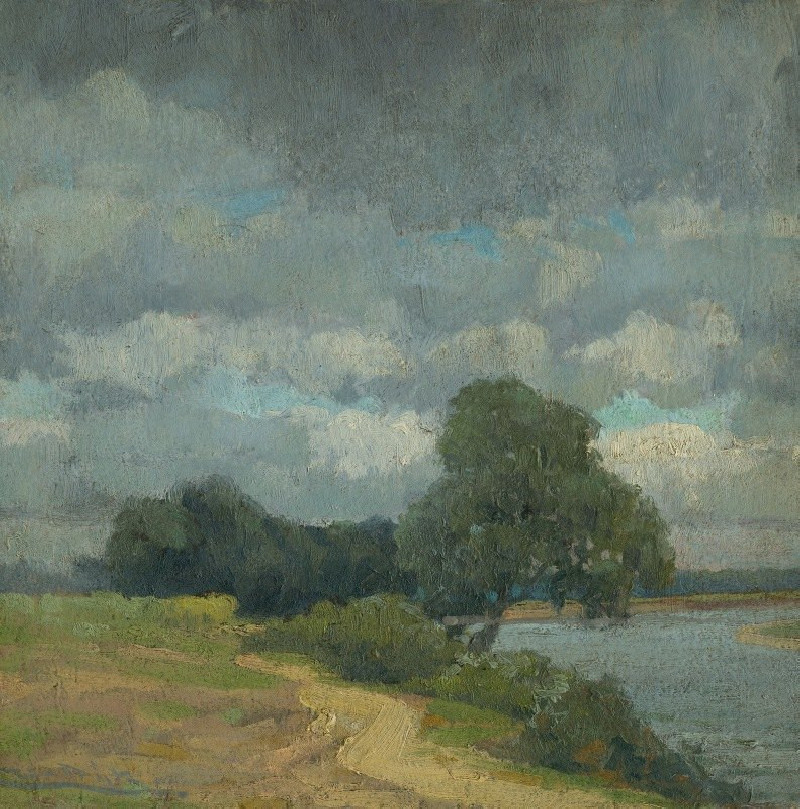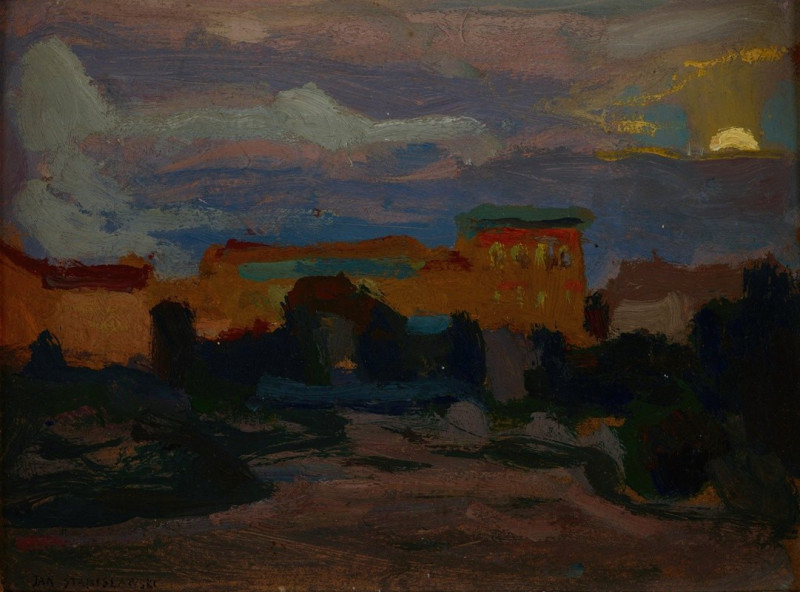The Palisades (1909)
Technique: Giclée quality print
Recommended by our customers
More about this artwork
"The Palisades," painted by George Wesley Bellows in 1909, presents a vivid and dynamic landscape that encapsulates the rugged beauty of nature juxtaposed against subtle human presence. The observer's attention is immediately drawn to the stark contrasts articulated through Bellows' masterful use of color and light. The canvas is divided by the dramatic cliffs known as the Palisades, rising starkly from the icy Hudson River which snakes through the scene with a shimmering, almost metallic blue that catches the light.In the foreground, Bellows portrays a chilling winter scene where snow blankets the ground, clinging to the rocks and a rough, barren tree that slices vertically through the painting. The left of the painting is visually warmed by muted sunlight, hinting at the weak warmth of winter’s sun. Contrasting with the cold scene, small figures can be made out - their presence providing a scale to the majestic cliffs and a hint to the human interaction with this vast natural landscape. Also observable are elements of human encroachment, such as a lamp post and piled debris, suggesting the ongoing dialogue between man and nature.Bellows' application of paint is both forceful and expressive, which enhances the raw texture of the scene - ice seems tactile, and the rocks rugged. His brushstrokes evoke the physical coldness of the scene, but also the warmth of the light, playing with the viewer’s senses and emotions.“The Palisades” is not just a landscape painting; it is a narrative about resilience, both of the natural world and of humanity's persistent, albeit small-scale, presence within it. Through this work, Bellows invites viewers to contemplate the beauty and complexity of natural landscapes, reminding us of our transient yet impactful role within them.
Delivery
Returns
George Wesley Bellows (August 12 or August 19, 1882 – January 8, 1925) was an American realist painter, known for his bold depictions of urban life in New York City. He became, according to the Columbus Museum of Art, "the most acclaimed American artist of his generation".

